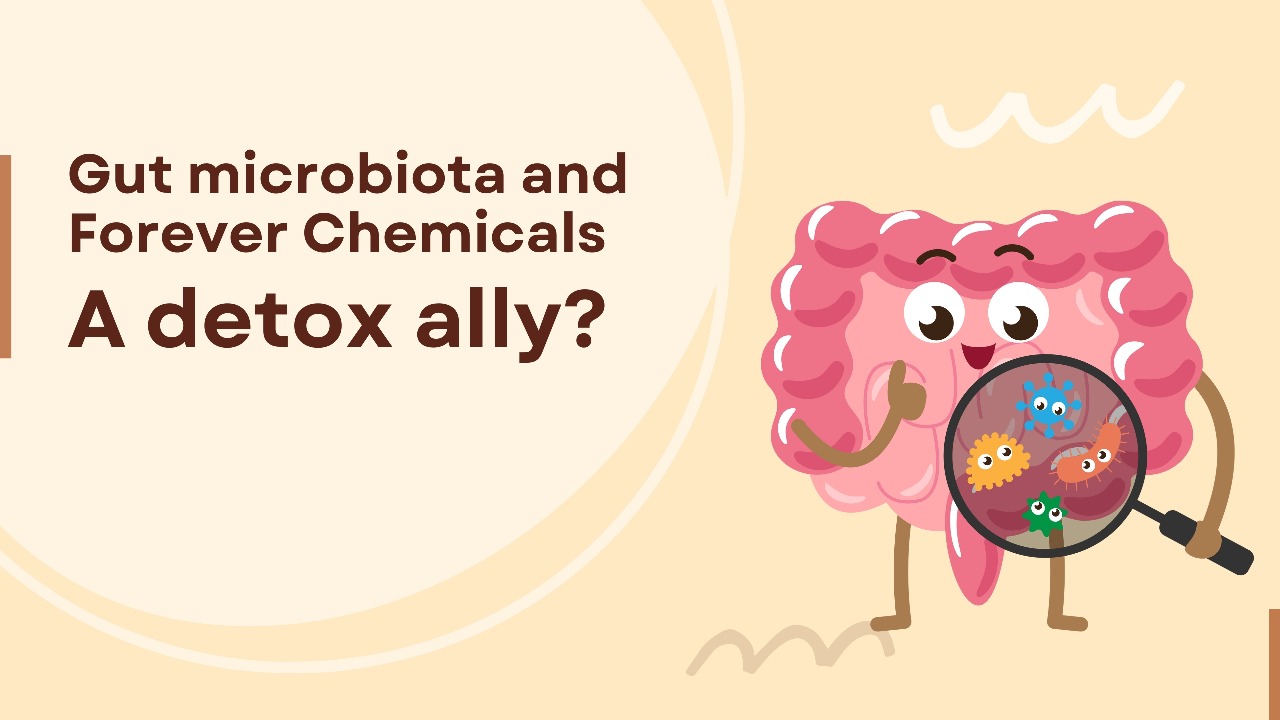As we navigate life in an industrialized world, “forever chemicals”like also known as PFAS (Per- and polyfluoroalkyl substances)have become inevitably difficult to avoid.These toxinsare present in your household cookwarelike non-stick tawa, fast food wrappers, waterproof clothing and more. They are called ‘forever’ as they do not break naturally. They are not easy to clear from the body, leading to its accumulation eventually, causing tissue and organ damage, hormonal disorders and even cancer!
Certain bacterial strains have PFAS bioaccumulating trait. As gut microbiota forms a critical interface between exposure and the internal environment of the body, the study by Cambridge University was conducted to see its interaction with PFAS.
🧬What have they found?
The pollutants bioaccumulated by gut bacteria included perfluorooctanoic acid (PFOA) and perfluorononanoic acid (PFNA). These nine species – Bacteroides caccae, Bacteroides clarus, Bacteroides dorei, Bacteroides stercoris, Bacteroides thetaiotaomicron, Bacteroides uniformis, Odoribactersplanchnicus, Parabacteroides distasonis and Parabacteroides merdae – bioaccumulated PFNA and/or PFOA.
- PFNA exposure varied from 25% ( distasonis) to 74% (O. splanchnicus)
- PFOA from 23% ( merdae) to 58% (O. splanchnicus)
This shows selective strains can sequester toxic chemicals efficiently, even at very low exposure levels.
🦠The mechanism:
The science behind high bioaccumulation is:
- Gram-negative strains with higher accumulation.
- Rich lipid contents = more PFAS accumulated
- PFAS chain lengthà longer the better
- Fast kinetics à uptake within minutes
- Lower exposure levels showedhigher bioaccumulation.
- It was also seen that PFAS uptake by bacteria increased with chain length and occurred efficiently even at nanomolar exposure levels.
Kefir, a probiotic, was found to contain 66 human gut commensal strains, 10 probiotic strains, and 10 bacterial and 3 yeast strains that actually amounted to 70% of the abundance of gut microbiome. Among these 51 strains had low bioaccumulation (gram-negative) and 38 of them had high bioaccumulation (gram-positive).
Experiments on certain strains like E. coli when TolC protein (membrane protein) was deleted there was five-fold increase in PFAS bioaccumulation and B. uniformis displayed unique endurance for PFAS for long exposures.
🧫Conclusion: Medical-based detox?
Gut microbiota can reduce systemic PFAS exposure via its faecal elimination, suggesting a microbial role in host detoxification of persistent “forever” chemicals, which is linked to cancer, infertility and hormonal disorders. This paves way in the direction of microbial-based detox strategy which could yield a safe, effective and sustainable solution.
Reference:
Lindell AE, Grießhammer A, Michaelis L, Papagiannidis D, Ochner H, Kamrad S, Guan R, Blasche S, Ventimiglia LN, Ramachandran B, Ozgur H. Human gut bacteria bioaccumulate per-and polyfluoroalkyl substances. Nature Microbiology. 2025 Jul 1:1-8.
Link:

Written by Dr Shobhitha Tantry B

